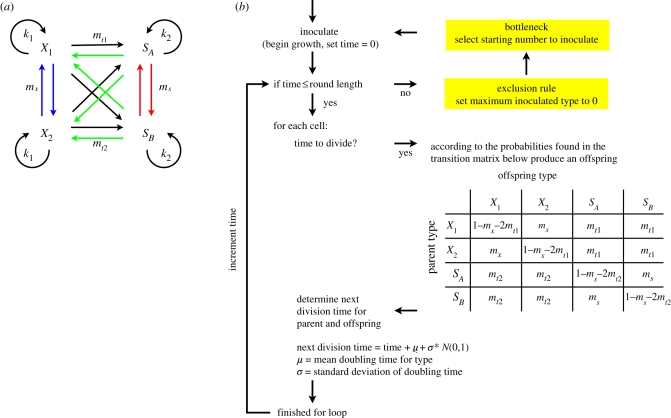Figure 1.
Model of switcher evolution. (a) X1 and X2 are non-switching phenotypes that grow according to rate k1. X1 can generate X2 and vice versa by mutation (mx). SA and SB phenotypes grow at a rate k2 and are the same genotype: they stochastically switch at a rate greater than spontaneous mutation (ms). The routes between X and S phenotypes, mt1 and mt2, occur via mutation. The model depicts the system during one round of growth in a constant environment. When populations experience multiple rounds of growth they do so in the face of a regime that involves frequency-dependent selection realized via dual imposition of an exclusion rule and population bottleneck (see text). Applied at the end of each round, the phenotype common during the current round is assigned a fitness of zero and is thus excluded from participating in the next round (the exclusion rule). Concomitantly, the population passes through a bottleneck and is re-established from one (or a small number) of phenotypically distinct types selected at random from among the survivors (blue, mx; red, ms; black, mt1; green, mt2). (b) A flowchart depicting the algorithm governing the stochastic simulations during one round of growth and selection. Inoculum added to a pristine environment begins a round of growth which continues for a set time (the round length), after which an exclusion rule and bottleneck (highlighted) are applied. The bottleneck determines the inoculum for the next round of growth and selection.

